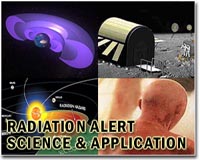 |
Tel Aviv, Israel (SPX) May 13, 2011 For diagnosing head and neck ailments, tests that use radiation are always less desirable than those that don't. Otolaryngologists have a wide range of techniques available to them, including CT or "CAT" scans, MRI and ultrasound. CT uses significant radiation and MRI a lower amount, but ultrasound is a non-invasive, non-radiating technique. It does not require injection of radioactive contrast material and has no side effects. Now, a new study by Tel Aviv University exploring the efficacy of expensive and invasive CT scans has found that, in some cases, they don't offer a clinical advantage over a simple, inexpensive ultrasound procedure. In his study, Dr. Michael Vaiman of Tel Aviv University's Sackler Faculty of Medicine compared the efficacy of CT versus ultrasound scans for locating vertebral arteries in the throat, an important assessment that must be completed before a surgeon operates in the neck area of the body. After comparing the outcomes of 250 CT scans with 500 ultrasound images, he concluded that there is no advantage to using CT scans for most of these procedures, especially those that are used to locate anomalies in the neck to map major arteries before surgery can take place. Dr. Vaiman's results were published in the March issue of the European Archives of Oto-Rhino-Laryngology.
When scans are sound Although ultrasound is not the investigation of choice for every neck pathology, it is adequate for diagnosis and assessment of treatment options for most of these conditions. Ultrasound can not only locate a lesion, it can provide information about its size, consistency, and relation to other organs, as well as other features. "I would recommend the use of ultrasound scans, and not radiating CT scans, for most procedures," Dr. Vaiman says. "I would especially recommend ultrasound when children are investigated. There are some tumors that do require CT or MRI investigation, but these cases are rare. When in doubt, and high-resolution imaging is necessary, I would suggest a low-radiating MRI." His findings follow warnings from international health organizations about the dangers of overexposure to CT-related radiation. Some medical experts caution that patients are exposed to too many CT scans, and the results could be harmful to their health. Excessive radiation can itself lead to cancerous growths, for example.
A less dangerous path "Preoperative ultrasound investigation allows a very precise identification of abnormal vertebral arteries," he reports. "I believe that radiation-free ultrasound investigation of blood vessels is as precise as CT 3D imaging, and should be used as an alternative in most cases."
Share This Article With Planet Earth
Related Links Tel Aviv University Space Technology News - Applications and Research
 Russia says fire put out near radioactive facility
Russia says fire put out near radioactive facilityMoscow (AFP) May 10, 2011 Russian authorities claimed Tuesday to have put out a large wildfire that raged for several days over an area of radioactive contamination in Russia's central Ural region. A wildfire burned "during the (May 9th) holidays in the zone of nuclear contamination," said the governor of Chelyabinsk region, where Mayak, Russia's facility that treats nuclear waste, is located. "It was successfull ... read more |
|
| The content herein, unless otherwise known to be public domain, are Copyright 1995-2010 - SpaceDaily. AFP and UPI Wire Stories are copyright Agence France-Presse and United Press International. ESA Portal Reports are copyright European Space Agency. All NASA sourced material is public domain. Additional copyrights may apply in whole or part to other bona fide parties. Advertising does not imply endorsement,agreement or approval of any opinions, statements or information provided by SpaceDaily on any Web page published or hosted by SpaceDaily. Privacy Statement |